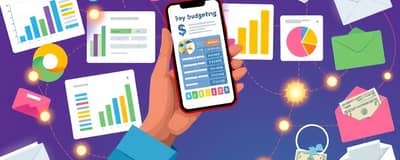Budgeting Spreadsheets vs. Apps: Which One Works Better?

Budgeting is a cornerstone of financial health, guiding every decision from daily expenses to long-term goals. Yet, deciding how to track these numbers can feel overwhelming.
In this article, we explore two primary methods for managing your personal finances: spreadsheets and mobile/web apps. We’ll compare features, weigh advantages and drawbacks, and help you choose the right tool for your unique needs.
Defining the Tools
Budgeting spreadsheets are templates created in programs like Microsoft Excel or Google Sheets. They require manual data entry of financial information but offer unparalleled transparency and flexibility.
Budgeting apps, on the other hand, sync directly with bank and credit accounts. They automate transaction tracking and categorization, sending real-time alerts and insights to your device.
Comparative Features Table
The following table highlights core differences between spreadsheets and apps, helping you quickly assess which approach aligns with your priorities.
Advantages of Spreadsheets
- Provides complete control over every detail in your budget.
- Cost-effective or free for most users.
- Offline access—no internet required for edits.
- High data privacy with local or personal cloud storage.
These benefits make spreadsheets ideal for those who enjoy tinkering. You can create custom categories, complex formulas, and personalized charts that reflect your exact financial situation.
Despite these strengths, spreadsheets also come with challenges. Users must take responsibility for entering data accurately and on time. Overlooking entries can lead to incomplete insights.
Manual data entry is time-consuming and can introduce errors if formulas are misapplied. Without built-in reminders, some people find it hard to stay consistent over months.
Advantages of Budgeting Apps
- Offers automatic synchronization with your bank accounts and transactions.
- Instant visual summaries, charts, and spending breakdowns.
- Built-in alerts and notifications to keep you on track.
- Accessible anywhere via smartphone or web browser.
Budgeting apps shine when you want real-time insights without the burden of manual updates. They categorize expenses automatically and can even suggest budget adjustments based on your habits.
However, no tool is perfect. Many apps require a subscription for advanced features like multiple account syncing or in-depth analytics. Users may also encounter connectivity issues if their bank’s security protocol changes.
Potential data privacy risks arise when sensitive financial information is stored on third-party servers. While most apps use encryption, breaches can occur.
User Suitability Scenarios
- Spreadsheets suit individuals who value precision, customization, and privacy.
- Apps benefit those who seek real-time updates and notifications on the go.
- Combining both methods can create a balanced approach: use an app for daily tracking and a spreadsheet for monthly deep dives.
Additional Considerations
Your choice should reflect not only functionality but also personal preferences and discipline. A powerful tool is useless if you abandon it after a few weeks.
Learning curves vary: spreadsheets may require familiarity with formulas, while apps can overwhelm with features beyond budgeting, such as investment tracking or credit offers.
Active engagement fosters better habits, so whichever tool you choose, commit to regular reviews. Set calendar reminders or attach budgeting to a daily routine like morning coffee or evening planning.
Blended Approach: Getting the Best of Both Worlds
Many savvy savers blend spreadsheets and apps. They let apps handle routine tracking and notifications, then transfer data into a spreadsheet for customized reporting.
This hybrid method provides the convenience of automation and the depth of personalized analysis. Over time, you’ll develop a richer understanding of financial patterns and opportunities.
Conclusion
Both spreadsheets and apps have unique strengths and drawbacks. Spreadsheets offer high customizability and privacy, while apps deliver convenience and real-time insights.
Ultimately, the best tool is the one you’ll use consistently. Assess your needs, trial a few options, and don’t hesitate to adjust your system as your financial goals evolve.
Whether you favor the hands-on precision of spreadsheets or the automated ease of apps, a well-maintained budget is your roadmap to financial freedom and peace of mind.
References
- https://www.oneazcu.com/about/financial-resources/saving-budgeting/the-pros-and-cons-of-budgeting-apps/
- https://www.consumerreports.org/money/personal-finance/benefits-and-risks-of-using-personal-financial-apps-websites-a8590361886/
- https://financialwellnesscenter.northwest.bank/money-management/budgeting/article/using-budgeting-apps
- https://www.intuit.com/blog/budgeting/budgeting-apps/
- https://www.businessinsider.com/personal-finance/banking/best-budgeting-apps
- https://www.clevergirlfinance.com/the-best-budget-templates/
- https://nomoredebts.org/blog/manage-money-better/budgeting-apps-canada-pros-cons
- https://www.chase.com/personal/banking/education/budgeting-saving/budget-spreadsheet






